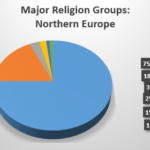Understanding Judaism: Religion, Ethnicity, or Both?

Introduction: The Complexity of Jewish Identity
Judaism is one of the world’s oldest traditions, but a frequent question arises: Is Judaism an ethnicity or a religion? The answer is layered, reflecting centuries of history, belief, and cultural evolution. This article provides an in-depth exploration of the question, offering practical guidance for those seeking to understand or connect with Jewish identity in its many forms.
Judaism as a Religion
Judaism is fundamentally a religion , rooted in the belief in one God and a set of spiritual, ethical, and ritual laws. These laws, found in the Torah and other sacred texts, have guided Jewish communities for millennia. Core religious practices include the observance of the Sabbath, keeping kosher dietary laws, celebrating festivals like Passover and Yom Kippur, and regular prayer. For many, Judaism primarily means adherence to these religious principles and community life centered around the synagogue.
However, religious observance varies widely among Jews today. There are Orthodox, Conservative, Reform, Reconstructionist, and secular Jewish communities, each interpreting tradition differently. This diversity means that identifying as Jewish can range from strictly religious to entirely secular, with many people considering themselves Jewish by heritage or culture rather than by belief or practice. Anyone interested in learning more about Jewish religious practices can visit local synagogues, engage with community events, and consult educational resources from established Jewish organizations and community centers.
Judaism as an Ethnicity
Alongside its religious dimension, Judaism is also an ethnicity . Jewish people share a collective ancestry that traces back to the ancient Israelites of the Middle East. Over centuries, Jews have maintained a strong sense of group identity, even as they migrated and formed diverse communities around the world. Key aspects of Jewish ethnicity include:
- Common Ancestry: Many Jews can trace lineage back to the ancient Israelites, forming a sense of kinship and shared roots [5] .
- Language: Hebrew is a unifying language in religious life; historically, communities also spoke Yiddish, Ladino, and other dialects reflecting their diasporic journeys [1] .
- Cultural Practices: Distinct customs, foods, music, and holiday observances reinforce identity beyond religious belief [3] .
- Historical Memory: Shared experiences of exile, persecution, and resilience-such as the Babylonian exile and the Holocaust-create a collective narrative that shapes Jewish identity [5] .
Ethnic identity can persist even among Jews who do not actively practice the religion. Many secular Jews still maintain a strong sense of ethnic belonging, participate in cultural traditions, and feel connected to the broader Jewish people through history and heritage.

Source: christianity.com
Judaism as a Nation and Culture
Historically, Jews have also been seen as a nation -not in the modern sense of a state, but as a distinct people bound by common religion, language, and customs. The concept of the Jewish nation is found throughout the Bible and Jewish tradition, reinforcing the idea that Jewishness is more than just faith or ancestry [4] . Today, the modern State of Israel offers a focal point for Jewish national identity, but Jewish nationhood predates its establishment by thousands of years.
At the same time, Jewish culture is rich and multifaceted. It encompasses literature, music, art, humor, and cuisine. Jews from different regions-such as Ashkenazi, Sephardic, and Mizrahi Jews-have developed unique traditions while maintaining a sense of shared identity. Participating in Jewish cultural events, learning about Jewish art and literature, or joining heritage organizations can be meaningful ways to connect with this aspect of Jewish identity.
Conversion and Inclusion: Who Is a Jew?
One unique feature of Jewish identity is its openness to converts. Anyone can become Jewish through a formal process of conversion , which typically includes study, commitment to Jewish law and tradition, and a ritual immersion (mikveh). Once accepted, converts are considered fully Jewish, with the same status as those born to Jewish parents [2] . This inclusion means that Jewish identity is not strictly defined by ethnicity or race.
For those interested in exploring conversion, the process usually involves contacting a rabbi or local synagogue. Each denomination has specific requirements, so it is important to reach out to recognized Jewish organizations or community centers for accurate guidance. While some online resources exist, it is best to begin by searching for “Jewish conversion process” along with your location or desired denomination (e.g., “Orthodox conversion in New York”).
Challenges in Defining Jewish Identity
The question of whether Judaism is a religion or an ethnicity is complicated by history and contemporary realities. Jewish identity is dynamic and often context-dependent . Some challenges include:
- Multiple Definitions: Different Jewish communities, governments, and organizations use varying criteria for who is considered Jewish. For example, Israel’s Law of Return defines Jewishness for immigration purposes differently than religious authorities do.
- Intermarriage and Assimilation: As Jews have integrated into wider societies, questions arise about the transmission of Jewish identity to children of mixed marriages and those whose connection is primarily cultural.
- Race and Diversity: Jews are not a race; Jewish communities include people of many racial and national backgrounds. There are Black Jews, Asian Jews, and Jews from all continents, reflecting centuries of migration and conversion [4] .
For individuals seeking to clarify their Jewish status for religious, legal, or personal reasons, it is advisable to consult with major Jewish organizations, local synagogues, or legal experts specializing in Jewish law.

Source: mapsoffaith.com
Practical Steps to Engage with Jewish Identity
If you are interested in learning about or connecting with Judaism as a religion, ethnicity, or culture, there are several practical steps you can take:
- Explore Your Heritage: If you have Jewish ancestry and want to learn more, consider genealogical research using reputable services or contacting Jewish heritage organizations. Many offer educational resources and community programs.
- Participate in Community Events: Synagogues and Jewish community centers (JCCs) frequently host open events, classes, and cultural programs. These are accessible ways to experience Jewish traditions firsthand.
- Study Jewish History and Culture: You can find a wealth of books, films, and online courses covering Jewish history, literature, philosophy, and art. Use search terms such as “Jewish history online course” or “Jewish cultural studies” to find reputable offerings from universities or established cultural institutions.
- Contact a Local Synagogue: Whether you are interested in religious practice or simply wish to learn more about Jewish life, synagogues often welcome newcomers to educational programs and services.
- Consider Conversion: For those who wish to become Jewish, begin by reaching out to a rabbi or Jewish community center. Each movement (Orthodox, Conservative, Reform, etc.) has its own conversion process. Search for “Jewish conversion [your city or denomination]” for local options.
Challenges may include varying degrees of openness, denominational differences, and requirements for participation or conversion. If you encounter obstacles, consider alternative approaches such as online learning, interfaith organizations, or contacting national Jewish advocacy groups for support and information.
Key Takeaways and Summary
Judaism cannot be reduced to only a religion or only an ethnicity . It is an intricate combination of faith, ancestry, culture, and shared history. Some Jews are deeply religious; others may be secular but feel a profound connection to Jewish peoplehood. The boundaries of Jewish identity are shaped by tradition, community, and personal choice, making it one of the most dynamic identities in the world today.
For anyone seeking to understand or join the Jewish people-whether through religious observance, cultural participation, or conversion-there are many accessible pathways. Begin by reaching out to recognized Jewish organizations, synagogues, or community centers. Use reputable sources and search strategies to find resources that best fit your interests and needs.






